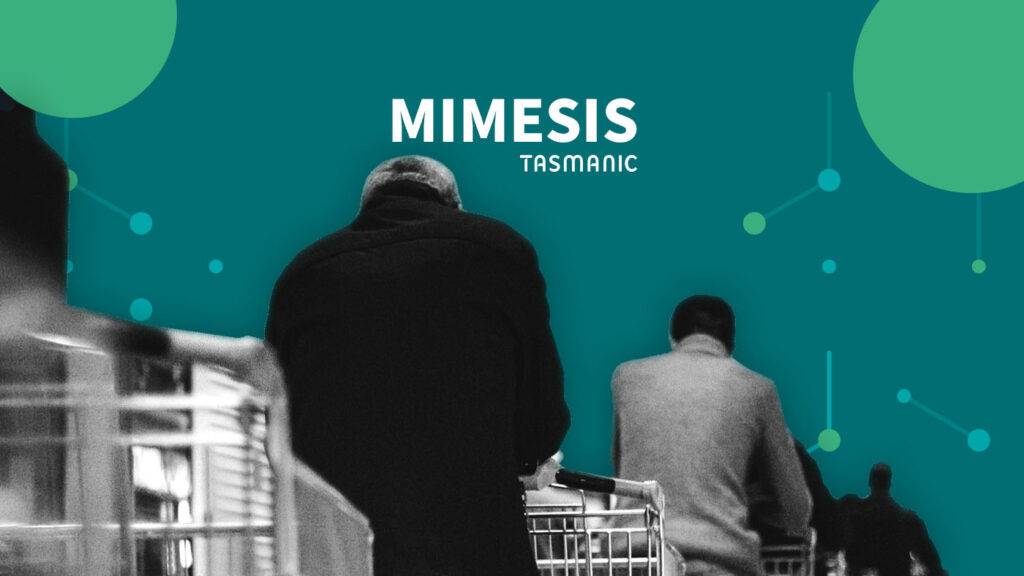
Last updated November 11, 2022
Mimesis meaning
Mimesis is Ancient Greek and means imitation, imitation, imitation. It is also a concept developed by French anthropologist René Girard. He observed that much (buying) behavior is not spontaneous or comes from within ourselves but rather is a reaction to what others around us desire and do.
Peter Thiel, the first major investor in Facebook, is a big fan of Girard and saw the power of his ideas for the new medium. It's also valuable for SME entrepreneurs to know more about it. And we like to look at what you can do with it in online marketing and how it works in b2b. This article takes a closer look at it.
What anthropologist René Girard teaches about buying behavior
People form their desires according to what they see around them. That, in a nutshell, is the essence of what Girard means by mimesis. Famous example: if someone has a new car, then soon the neighbor's will also need replacing. Desire creates desire and this leads to a trend in which products in particular can become wildly popular in a short period of time. The exponential growth of social media platforms such as Facebook, Youtube and recently TikTok also demonstrate the power of mimesis.
While people think they make the buying decision themselves, that choice is often much more socially motivated. People want to profile themselves toward those around them by wanting what "everyone else" wants. This is how fashion in particular works naturally, even so strongly that people want to wear clothes that do not flatter them at all. It also explains the appeal of celebrities, well-known bloggers/vloggers and public figures.
Buying behavior, feelings over reason. Also in b2b?
Specialists in buying behavior agree that irrational needs play a much bigger role in purchases than we think. An interesting phenomenon also plays a role here: the frequency illusion. Everyone recognizes that when they have bought a certain car, you suddenly see it driving everywhere. Or that someone tells you about a new hit, which you don't know and then hears about it everywhere.
The b2b market is generally seen as rational. A new supplier is evaluated strictly objectively on all sorts of rational points, by several people. But even here the well-known "click" with the people of the company often turns out to be the deciding factor. In fact, it always comes down to mental and physical availiability. And that is just as true in B2B markets.
A good example of mimesis in b2b is the use of Hubspot. Because many successful companies were using Hubspot, and this was aggressively promoted by Hubspot themselves and their partners, many more companies wanted to do the same. Without thinking about whether an investment in Hubspot would help achieve their business goals. We have seen clients with a few 100 visitors on their website and a license for marketing automation of €10,000. They really could have invested that money better on more visitors (=reach).
Another example is the hype of agile working. Not every organization benefits from it but it is pushed through anyway, sometimes successfully but more often not at all. A waste of all the effort and costs incurred.
Mimetic behavior from an early age
Mimetic behavior begins at an early age. Neuroscientists discovered the so-called mirror neurons. These are brain cells that are activated by movement, even if you see that movement in someone else. Among other things, it also plays a role in learning language. And when a child plays with a doll or cube, another child wants to play with that very same doll or cube. Mirror neurons thus have a major role in learning through imitation and in interpreting and understanding the actions of others.
Applying mimesis in online marketing
By realizing that people - also in b2b - are sensitive to mimesis and that choices often have a deeper and irrational background, you can better help leads and customers to (continue to) choose your company, product or service. Simple perhaps but a good example follows well.
The knowledge described above will benefit online marketing. Consider the following:
- On your website and social media: show that you have customers through reviews, customer cases, customer logos.
- Give customers a reason to put your logo on their website. Consider an affiliate program as, for example, Leadinfo does.
- Use remarketing to give people the idea that you can be seen everywhere.
Is your company missing opportunities?
Our pay is based on your results.

















 Team
Team FAQ
FAQ Vacancies
Vacancies Contac
Contac Marketing
Marketing SEO
SEO SEA
SEA Strategy
Strategy Sales
Sales Optimization
Optimization AWR
AWR Ahrefs
Ahrefs Channable
Channable ContentKing
ContentKing Leadinfo
Leadinfo Optmyzr
Optmyzr Qooqie
Qooqie Hubspo
Hubspo Semrush
Semrush




